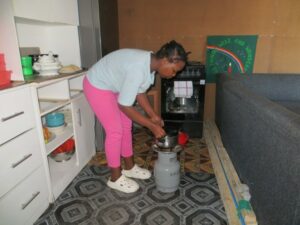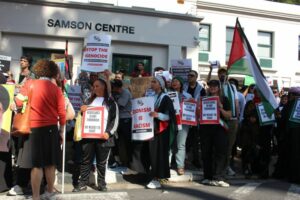A report by the Children’s Institute has demystified long-held stigma that teenagers get pregnant to access the child support grant (CSG), contributing to a rise in teenage pregnancy. The University of Cape Town-based institute says that according to research evidence, the overall fertility rate has been declining for years, and that teenage pregnancy rates have not risen. The report, commissioned by the Department of Social Development, shows that early and continuous receipt of the CSG is associated with decreased sexual activity in adolescence and reduced teen pregnancy, alongside protection against other adolescent risk factors (for example, substance abuse).
“Critics of social grants often imagine that there must be perverse incentives – that people must be engaging in fraudulent or undesirable behaviour in order to make themselves eligible. Another common claim is that poor people do not spend their money wisely and waste the grant on hairdressers, alcohol and other “sins”. It was important to investigate these concerns because they can be used as arguments to reduce or discontinue grants, rather than to expand them,” said senior researcher, Katharine Hall.
The report states that of the 7.4-million caregivers who receive child support grant for children, less than 1% are under 20 years of age. “It is true that South Africa has unusually high teenage pregnancy rates, but this is a long-term phenomenon that predates the CSG. It is important to understand and address the underlying factors, which would include gender inequality, poor sex education, limited access to reproductive health services as well as widely-reported judgemental attitudes among staff in health facilities, which can be a deterrent for sexually active teenagers who want to avoid unplanned pregnancy,” Hall said.
Child Support Grant not enough
On the contrary, the report found that over a quarter of children in South Africa continue to bear the brunt of child poverty regardless of the CSG they receive monthly. While this is one of the most effective government initiatives in terms of reach and accessibility, it is still ineffective to combat child poverty as the money is just not enough.
The Children’s Institute says that the food poverty line (FPL) in 2023 will be R760 per person per month. The report titled, Reducing Child Poverty states that this is the bare minimum for providing the daily calories required for survival, if the CSG (now R510 per month) is increased to the FPL, an extra 1.5 million children would be lifted over the food poverty line, and the depth of poverty for those who stay below it will be significantly reduced. This way, child hunger, malnutrition, and stunting will be reduced.
Phathiswa Bawuti, a mother of CSG beneficiaries, has three children who all are recipients of CSG and are dependent on it as family income. She says that they are really struggling because the money is not enough, “It is hard because the money doesn’t meet our monthly needs, we can’t even get enough groceries to sustain us just for a month,” she says.
This family was under greater stress during the Covid-19 lockdown, because with children not attending school and everyone at home the whole day, there was more strain on food and groceries. “The CSG was especially not helpful during the hard lockdown in South Africa; on the contrary things got worse,” says Phathiswa, “with children always around asking for food and other basic needs like clothes.”
Food parcels being distributed at the South African Social Security Agency offices in Khayelitsha for South Africans in need during the lockdown in 2020. Archive photo by Lilita Gcwabe.
While CSGs may have not been enough to support some families and their surplus needs, some do acknowledge the basic role it played in putting something on the table. Noluvuyo Meva, a businesswoman in the informal economy whose business was shut down during lockdown, is very appreciative of the role the CSG played in reducing poverty in her family. “Social grant helped bring food to the table; that was the most fundamental thing we needed to get by as a family, because soldiers went around hitting anyone seen selling anything on the streets,” says Noluvuyo.
However, even if the grant were to only cater for a child’s needs, it is still not enough, says the Children’s Institute report. The gap between the food poverty line and the CSG is unforgiving and has widened due to food price inflation which has outpaced the CSG amount, according to the report. “Food inflation has been particularly high in the last two years, and in that time the gap widened dramatically. The purchasing power of the CSG has been eroded and the grant value (at R510 per month) is now 33% below the food poverty line (R760 per month),” Hall said.
According to the Pietermaritzburg Economic Justice and Dignity Group’s Household Affordability Index, the household food basket for September shows that that the food in the basket cost R5,155.77, R31.43 (0.6%) more than in August when it cost R5,124.34, and R349.91 (7.3%) more than a year ago. The biggest price increase was for rice (10kg), where the price increased by R11.18, from R146.61 in August to R157.79 in September. Other big increases were noted for butternut (17%), green pepper (18%), Cremora (5%), bananas (7%), oranges (12%) and peanut butter (5%).




